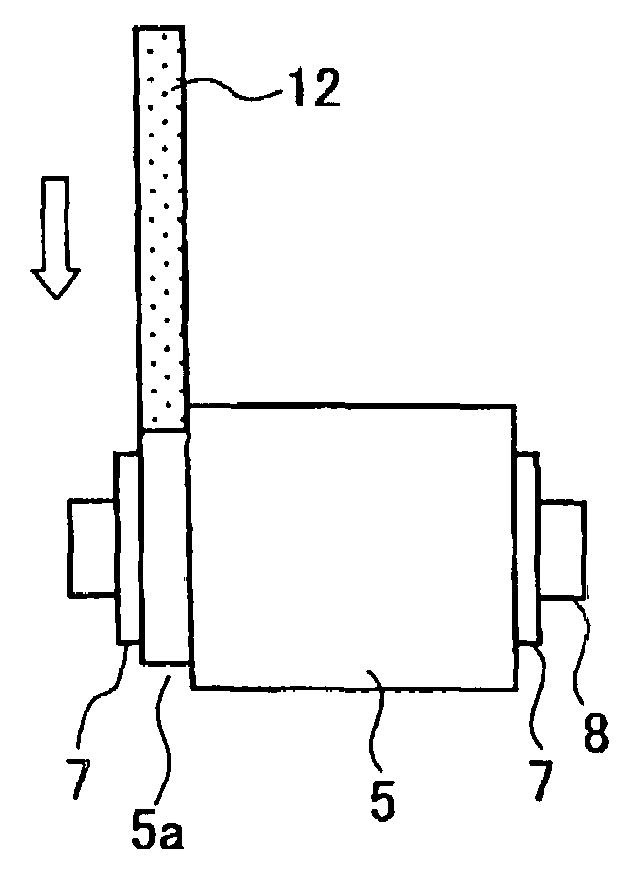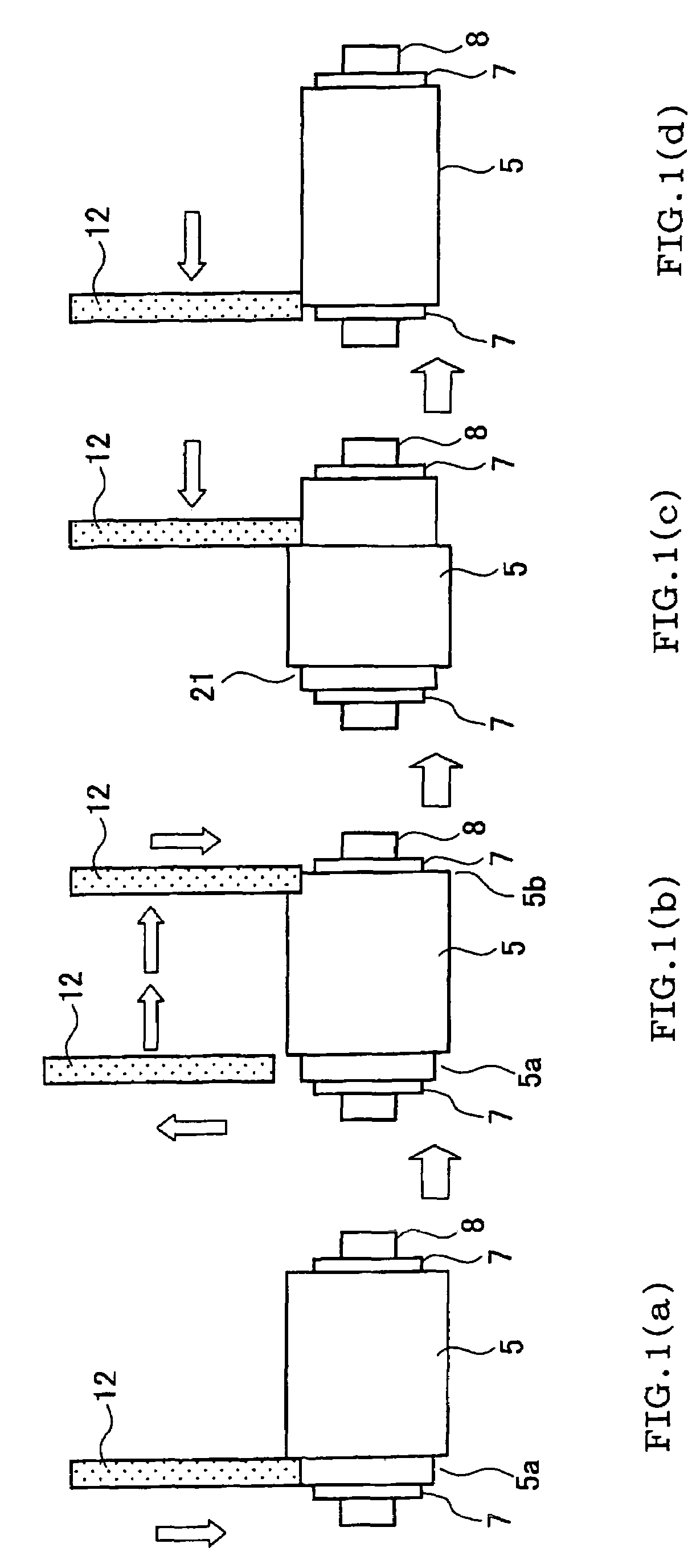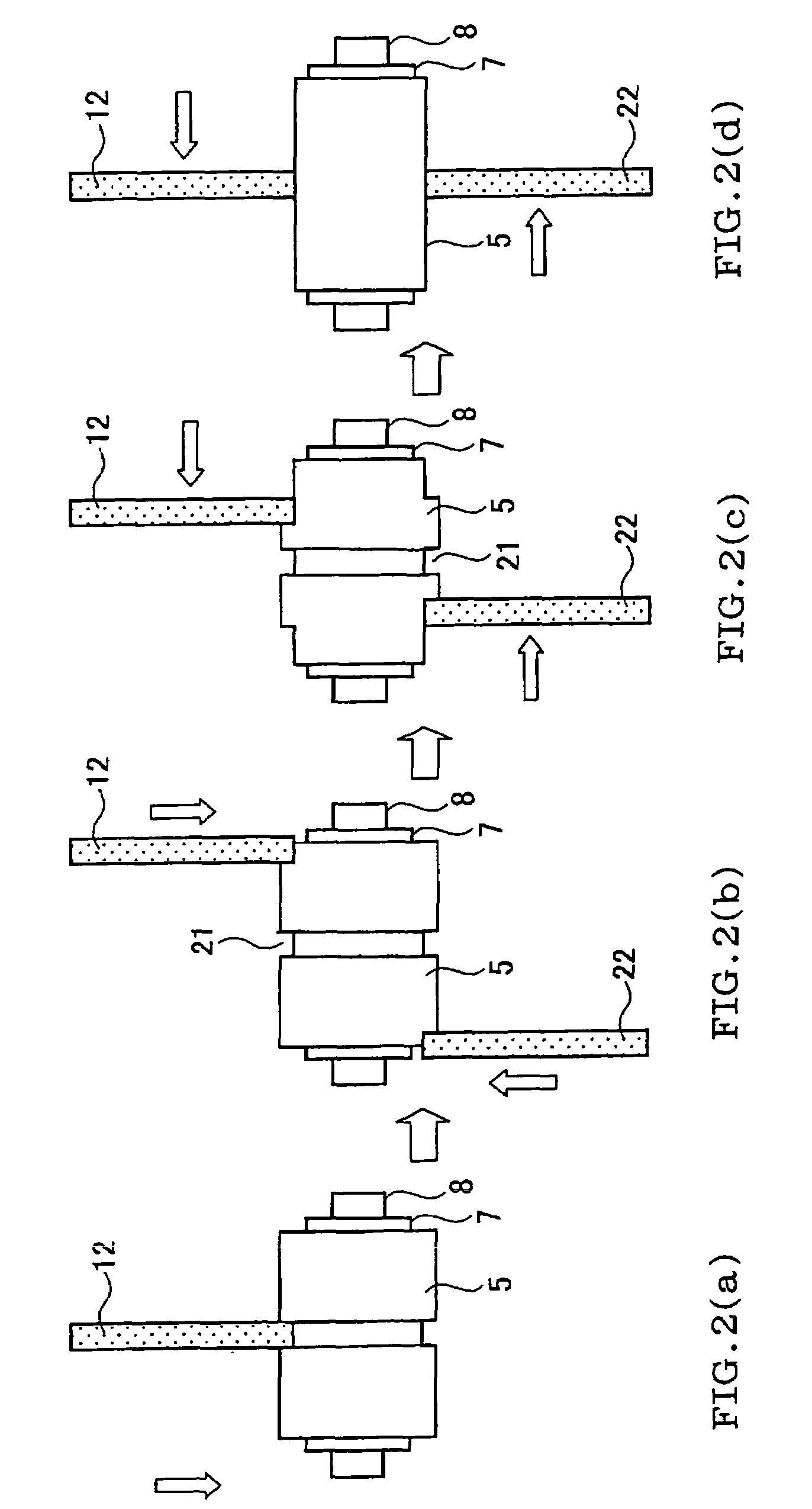Grinding method
a grinding method and honeycomb technology, applied in the direction of grinding machine components, other manufacturing equipment/tools, manufacturing tools, etc., can solve the problems of reducing yield, affecting the operation of grinding wheels, and affecting the proportion of the finished product, so as to improve the operability of the grinding wheel, reduce the processing time, and improve the processability
- Summary
- Abstract
- Description
- Claims
- Application Information
AI Technical Summary
Benefits of technology
Problems solved by technology
Method used
Image
Examples
first embodiment
[0058]FIG. 1 is a view showing a grinding process according to the grinding method of the present invention. The ends of the honeycomb structure 5 (workpiece) in the longitudinal direction are held using the pressing plates 7 formed of an elastic material such as rubber. The pressing plate 7 is attached to the rotational axis (rotary shaft) 8 connected with a motor (not shown). The honeycomb structure 5 is rotated during grinding due to rotation of the rotational axis 8.
[0059]As the grinding wheel 12, a flat grinding wheel having a width smaller than the length of the honeycomb structure 5 is used. The grinding wheel 12 is caused to come in contact with the honeycomb structure 5 while being rotated to grind the honeycomb structure 5.
[0060]In the first embodiment shown in FIG. 1, plunge grinding and traverse grinding are performed in combination, with the traverse grinding being performed after the plunge grinding.
[0061]In plunge grinding, as shown in FIG. 1(a), the grinding wheel 12...
third embodiment
[0072] since the process is completed by the first-stage and second-stage traverse grinding without requiring plunge grinding, the processing time can be reduced. Moreover, since chipping does not occur in the final stage of the second-stage traverse grinding, a complicated chipping prevention operation is made unnecessary, whereby the processability can be improved.
[0073]Table 1 shows qualitative comparison among the above-described embodiments and known grinding methods. A method “A” corresponds to the method according to the first embodiment, a method “B” corresponds to the method according to the second embodiment, and a method “C” corresponds to the method according to the third embodiment. The value shown in Table 1 indicates the ratio with respect to known plunge grinding (“1”). The methods “A” to “C” have advantages over the known grinding methods.
[0074]
TABLE 1Known traverse grindingWhen theamount ofWhen dummyKnown plungeNormal traversecutting wasmaterial wasEmbodimentgrindi...
PUM
| Property | Measurement | Unit |
|---|---|---|
| rotational speed | aaaaa | aaaaa |
| rotational speed | aaaaa | aaaaa |
| brittle | aaaaa | aaaaa |
Abstract
Description
Claims
Application Information
 Login to View More
Login to View More - R&D
- Intellectual Property
- Life Sciences
- Materials
- Tech Scout
- Unparalleled Data Quality
- Higher Quality Content
- 60% Fewer Hallucinations
Browse by: Latest US Patents, China's latest patents, Technical Efficacy Thesaurus, Application Domain, Technology Topic, Popular Technical Reports.
© 2025 PatSnap. All rights reserved.Legal|Privacy policy|Modern Slavery Act Transparency Statement|Sitemap|About US| Contact US: help@patsnap.com



